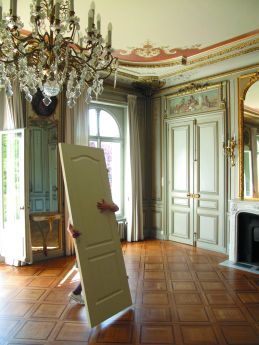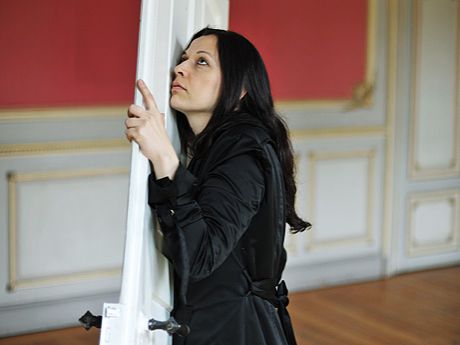Vlatka Horvat, Unhinged
Vlatka Horvat (b. 1974 in čakovec, Croatia) is a New York-based artist working across different media—from photography and video to works on paper, installation and performance. Her first US solo exhibition, titled Or Some Other Time, was presented in 2009 at the Kitchen in New York. Other recent presentations include For Example, a project developed for the 11th Istanbul Biennial, an 8-hour performance titled This Here and That There at PACT Zollverein in Essen, and exhibitions at annex14 in Bern, Galerie Xippas and Galerie Anne Barrault (both in Paris), White Columns and Rachel Uffner Gallery (both in New York), and the Contemporary Art Museum St. Louis. Forthcoming in 2010 are exhibitions at Manifattura Tabacchi in Torino, Austrian Cultural Forum in New York and Aichi Triennale in Nagoya (a collaboration with Tim Etchells), as well as performances at Outpost for Contemporary Art in Los Angeles and City of Women festival in Ljubljana. Vlatka's work is currently included in “Greater New York” show at MoMA PS1 in New York, "Natural Renditions” at Marlborough Gallery in New York and Mardin Biennale in Mardin, Turkey.
At the centre of this new performance by Vlatka Horvat are a lone performer and a door that has been removed from its frame. With the performer’s face pressed against the door to form a provisional door-woman hybrid – a linguistic pun come to life – this unstable couple occupies and moves around the parlour rooms of the Maison des Arts and further homes for a period of six hours. Unhinged, with its titular gesture to madness, merges body and object into a single unit, collapsing the normative of both the body and the domestic. The customary utility of the door vanishes when it leaves its place in the door frame and heads off into new locations while the body’s relationship to space is reconfigured by the flattening of its ‘front’ against the solid surface of the door, resulting in a comical impairment of the performer’s capacities for movement and vision.
Enacting simultaneously the act of ‘wearing a door’ and ‘being a door,’ the object becomes an additional body part, functioning simultaneously as the performer’s partner and as an impediment. Horvat’s temporary coupling of the door and the body, and the act of setting their merger in motion provokes the viewer to re-imagine the physical structure of domestic space itself. In a kind of excessive enactment of function, the movement of mobile door/door-woman creates new imagined walls and spatial divisions, as well as providing a series of ‘unnecessary’ entrances inside rooms, perceptually partitioning the space in places where no tangible walls exist.
Unhinged brings to the fore the role not only of an employed service worker, but also of women in the family context, and more widely, the function of the domestic space itself – as the various elements of the built environment are structured/devised so as to cater to the needs and wishes of its inhabitants. The door stands as a powerful player in this domestic theatre – a guard of solitude and privacy, a barrier from strangers or intruders, an invitation for entrance. By proposing a degree of mobility and autonomy for it, Unhinged brings the door from the role of invisible facilitator and servant of domestic traffic and access to a new place of visibility, play and problematic agency.


